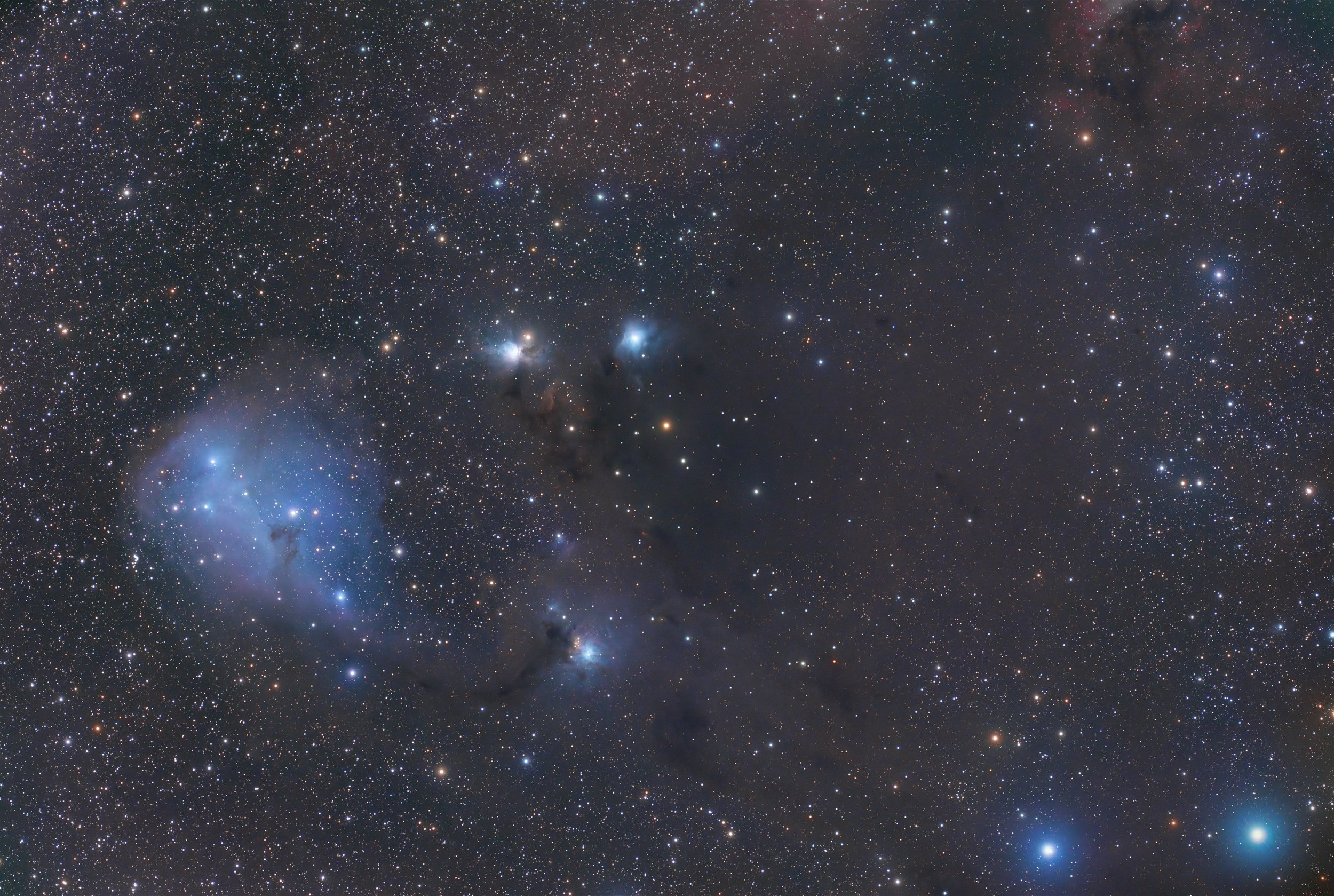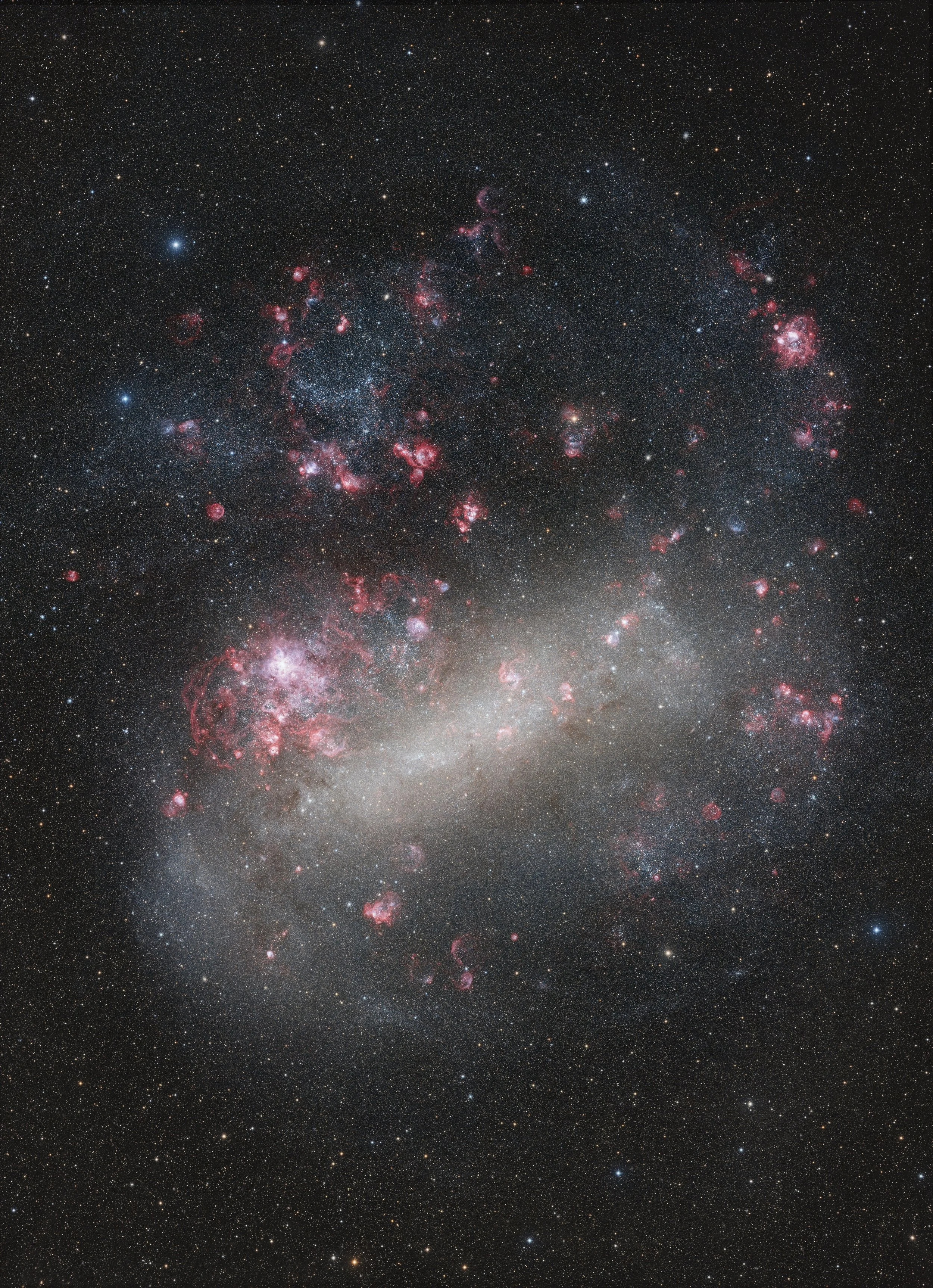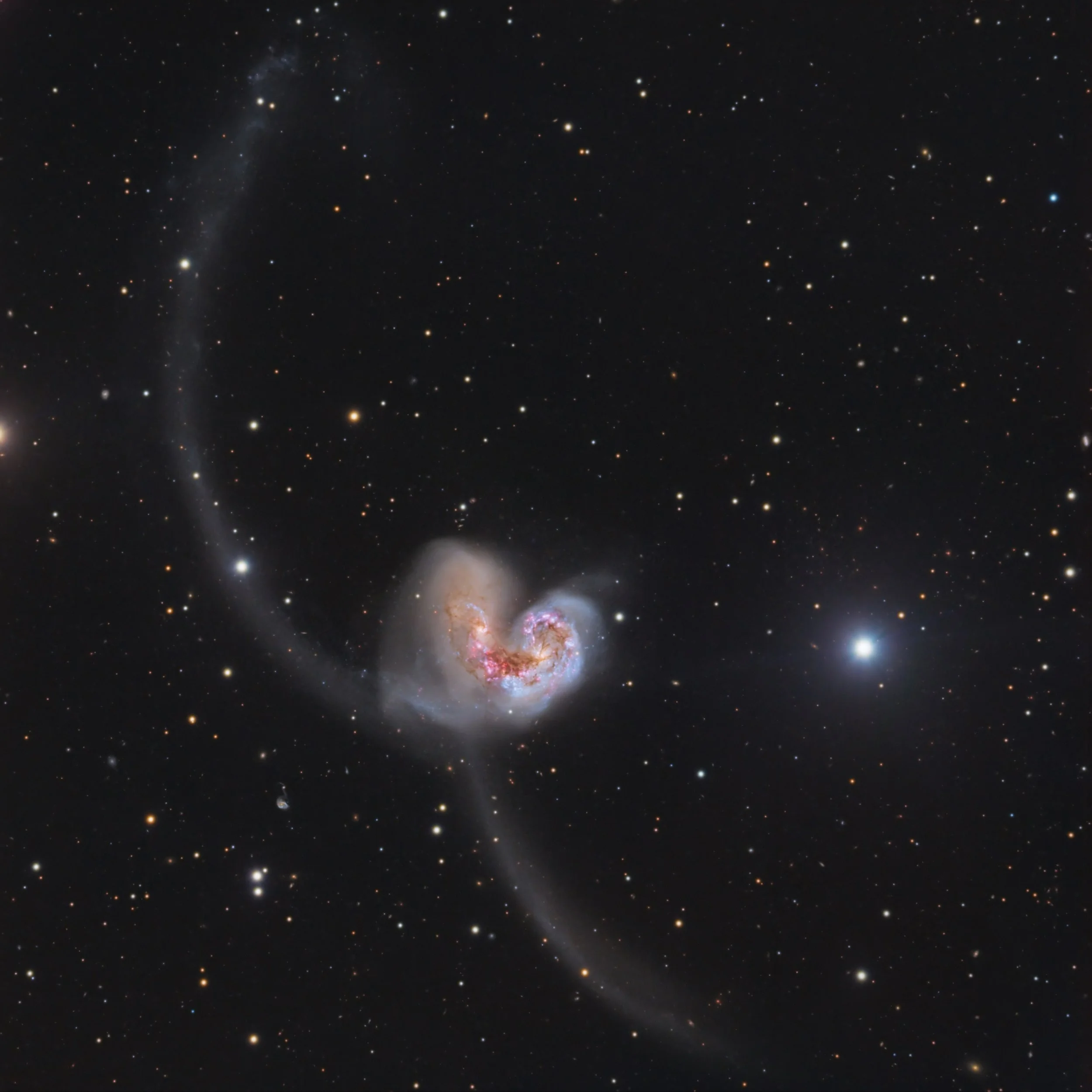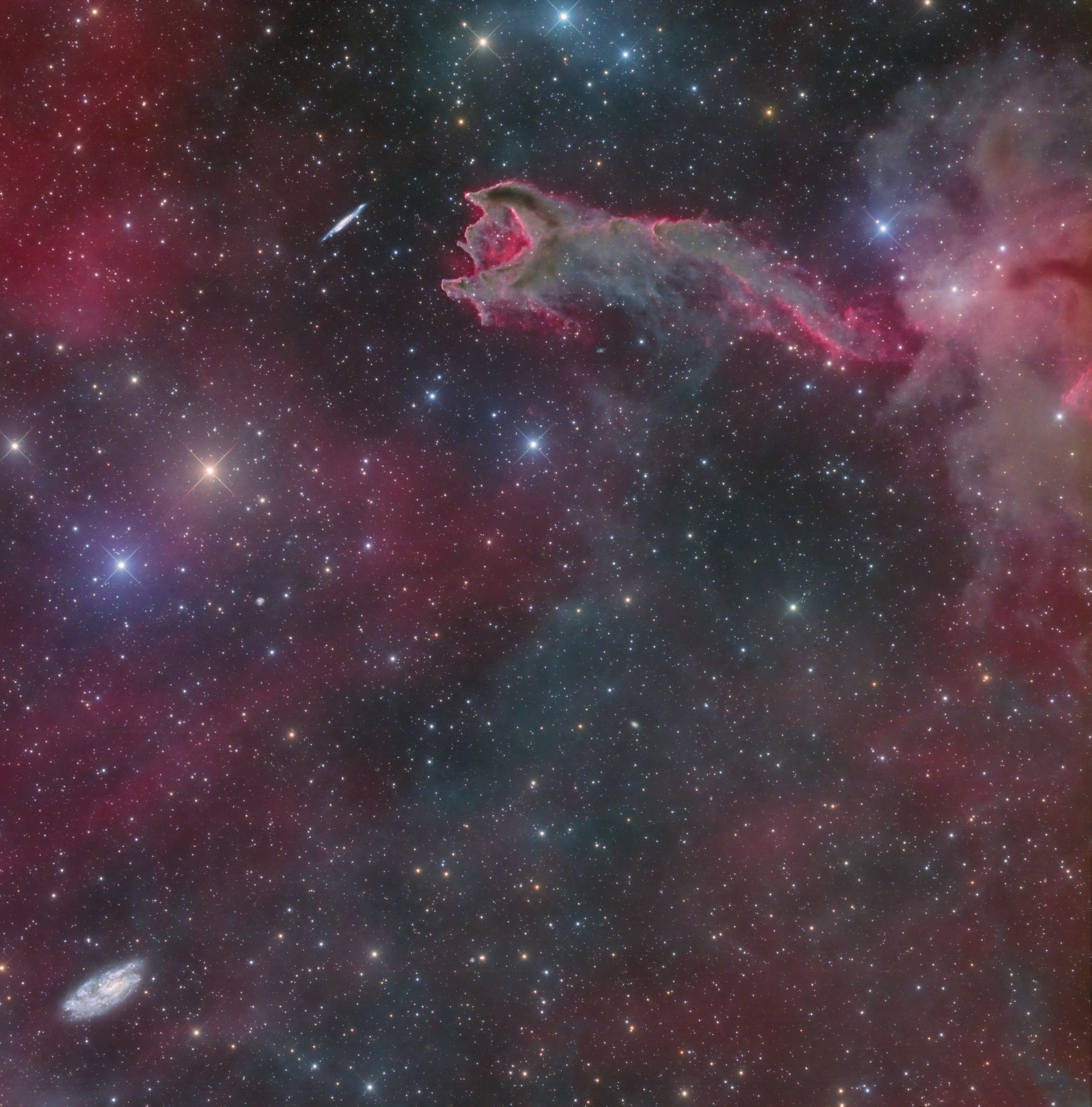
AAPOD2 Image Archives
Dusty Cloud -The Large Magellanic Cloud
The Large Magellanic Cloud (LMC), a satellite galaxy of the Milky Way, unfolds in stunning detail in this meticulously crafted two-panel mosaic, captured by the ShaRA team using the T4 telescope at Chilescope. This wide-field image, taken with a 100mm f/2 Nikon lens, showcases the LMC’s sprawling star-forming regions, glowing nebulae, and intricate networks of cosmic dust.
By employing seven different filters (LRGB + Ha, OIII, and SII), the team has revealed both the natural starlight of the LMC and the faint, ionized gas structures sculpted by intense stellar winds and supernova explosions. The Hydrogen-alpha (Ha) regions glow deep red, marking sites of active star birth, while Oxygen-III (OIII) in blues and Sulfur-II (SII) in golds unveil the turbulent interstellar medium shaped by dying stars.
Spanning roughly 14,000 light-years, the LMC is home to some of the most famous celestial objects in the southern sky, including the Tarantula Nebula (NGC 2070)—one of the most active star-forming regions in the Local Group. The mosaic also captures numerous supernova remnants, star clusters, and gaseous filaments, offering a breathtaking glimpse into the life cycle of stars on a galactic scale.
With nearly 32 hours of total exposure time collected over 20 nights, this image represents an extraordinary dedication to astrophotography. The combination of wide-field optics, deep integration, and precise post-processing has resulted in one of the most detailed amateur captures of the LMC, highlighting the galaxy’s beauty and its dynamic role in the cosmic ecosystem.
ShaRA#9 – The Antennaee Galaxies
The Antennae Galaxies (NGC 4038 and NGC 4039) are a pair of interacting galaxies located about 45 million light-years away in the constellation Corvus. These galaxies are named for the long, antenna-like tidal tails of stars and gas that extend from the galactic cores, resulting from their dramatic collision and merging process. The Antennae Galaxies are in the midst of a significant starburst event, where the interaction has triggered the formation of millions of new stars, visible as bright blue clusters scattered throughout the galaxies.
This image of the Antennae Galaxies captures the chaotic beauty of the ongoing cosmic collision, highlighting the vibrant star-forming regions and the intricate tidal tails stretching into space. Although amateur astrophotography equipment may not match the resolution and detail of images taken by space telescopes like Hubble, the dedication and skill of amateur astronomers bring the wonder of these distant galaxies closer to home. The contrast between the dense galactic cores and the ethereal tidal streams showcases the dynamic and ever-evolving nature of the universe.
Cosmic monster CG4 and surrounding
Image Description and Details : CG4 means “Cometary Globule #4” and is a complex of nebulosity and dust with a very peculiar shape (it looks like a concentrate of comets) located in the southern constellation of Poppa. The “head” of the galactic worm has dimensions of about 1.5 light years, while the offshoot that follows the head and which is directed in the opposite direction with respect to the rest of the famous Vela supernova (which is at the center of the huge GUM nebula), it has a length of about 8 light years.
The complex was photographed during ShaRA#4 project; this is a composition of 3 different images in wide field taken with the T3 from Chilescope Service (a very fast 500m f/3.8 Newtonian), processed by Christian Privitera, Andrea Iorio and me (Alessandro Ravagnin). RGB composition, total 2 hours of integration.
Copyright: ShaRA Team




